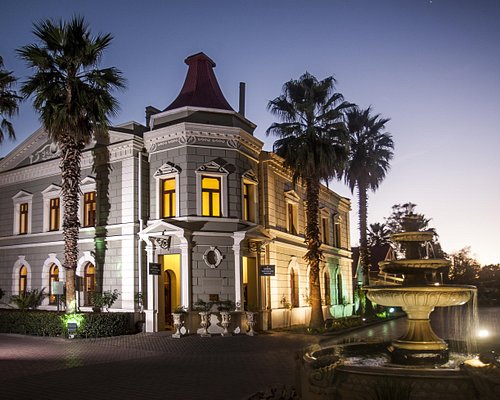6 Easy Facts About Johannesburg North Attractions Described
Table of ContentsFacts About Johannesburg North Attractions RevealedNot known Factual Statements About Johannesburg North Attractions The Ultimate Guide To Johannesburg North AttractionsJohannesburg North Attractions for DummiesNot known Facts About Johannesburg North Attractions3 Simple Techniques For Johannesburg North Attractions
The city grew on the edge of the Witwatersrand Key Reef, a subterranean stratum of gold-bearing quartz-silica corporation that arcs for hundreds of miles below the Highveld - Johannesburg North attractions. Many of the gold mines in the city ceased operation in the 1970s, however in its day the Witwatersrand gold industry accounted for even more than 40 percent of the world's yearly gold manufacturing.Johannesburg has a warm environment. Summer temperature levels balance regarding 75 F (24 C); winter months temperature levels balance about 55 F (13 C) and only occasionally dip listed below cold. The city enjoys regarding 8 hours of sunshine daily in both winter and summer season. Rainfall standards concerning 28 inches (700 millimetres) per year, however the complete varies considerably from year to year.
What rain the city receives falls almost specifically in the summer months, usually in spectacular late-afternoon electric storms. Air air pollution presents a substantial issue, particularly in the winter months, when thermal inversions impede the westward circulation of air from the Indian Ocean. Pollution is most extreme in the largely cleared up Black areas on the city's periphery, where many homeowners still count on coal for fuel.

The 10-Minute Rule for Johannesburg North Attractions
The balance of the city is occupied by whites. Accommodation varies in personality and quality. Soweto is notorious for its endless rows of municipally built, two-room matchbox homes, yet it additionally has a couple of flourishing territories in addition to brimming squatter camps, where tens of thousands live without water, electrical energy, or cleanliness facilities.
Physical growth, although somewhat restricted by transportation, continued quickly as migration to South Africa, and Johannesburg particularly, enhanced dramatically. This trouble was resolved in the 1930s when the automobile was introduced in automation to South Africa. Autos were, generally, confined to the well-off, and permitted them to relocate to the north of the city and commute into the centre.
Most poor suburban areas were combined, with inadequate blacks and whites living with each other, although the rich residential areas were normally reserved for whites.
The previous system of eleven phoned number areas was reorganised in 2006. Marshalltown, as seen from the top of the Carlton Centre. The M1 and M2 run behind the structures, and the more tips here southerly suburbs extend past the highway border. The central city of Johannesburg is located within the city's Region F. The number of people living in the internal city on a casual basis is unknown, as many are prohibited immigrants. The joblessness, education and learning, and age accounts of the area are all unknown, due to the difficulty of obtaining trusted information about the location.
What Does Johannesburg North Attractions Mean?
Centred on the CBD, the area includes the suburbs of Yeoville, Bellevue, Troyeville, Jeppestown, and Berea to the eastern. To the west it spreads out to Pageview (Johannesburg North attractions) and Fordsburg. There are little commercial areas to the south, such as City West-Denver and Benrose. Around 800,000 travelers travel through the central city each day, and it functions as a regional purchasing node for visitors from the southern residential areas. Yeoville and Bellevue have a mix of apartment and single residential units on tiny whole lots. The area is located on a hilly divide that ranges from east to west. The most obvious geographic function is Observatory Ridge, which is called for the large observatory located on it. The entertainment rooms are no more click here for more utilized, as a result of safety troubles.

Johannesburg Stadium, a training school for both the Golden Lions and Orlando Pirates, is surrounding. The eastern residential areas of Johannesburg lie in the city's 7th [] and 9th [] regions. The area is additionally functionally integrated with East Rand boundary towns outside of the official border of Johannesburg, such as Bedfordview and Edenvale (both component of Ekurhuleni Metropolitan Community).
The Johannesburg North Attractions Diaries
The eastern residential areas are some of the earliest areas of Johannesburg, there are big areas of Jewish and other European histories, the bulk of the population is English speaking. There are 3 golf courses as well as a number of secured ridges with viewsites.
Originally developed to house male migrant workers, numerous have been improved as dwellings for pairs and family members. The residential area was not traditionally permitted to produce work centres within the location, so practically all of its citizens are commuters to other components of the city.
4 Easy Facts About Johannesburg North Attractions Explained
The residential areas in the north residential areas are generally official, with no considerable locations visit the site of casual housing, or housing that lacks an irreversible structure. This is a recognized location, there is a pattern of land usage change from residential to industrial, specifically along main arterial roadways and around well-known nodes.
The area is well connected to roadway networks, especially along the north-south axis developed by the M1 and N1. Roads to the eastern and west are much less well established, as there are no highways taking a trip because instructions. In the direction of the northern border of the city, the thickness of development lowers, leaving big areas of undeveloped land around Midrand.
Johannesburg North Attractions Fundamentals Explained
The first suburb to the north of the central city is Parktown, which lies on a hill overlooking the internal city and Hillbrow. It has many wealthy locals and Edwardian-design estates, in addition to the Education and Clinical schools of the University of the Witwatersrand. The huge concrete Charlotte Maxeke Johannesburg Academic Health Center controls the sky line of Parktown.
Comments on “An Unbiased View of Johannesburg North Attractions”